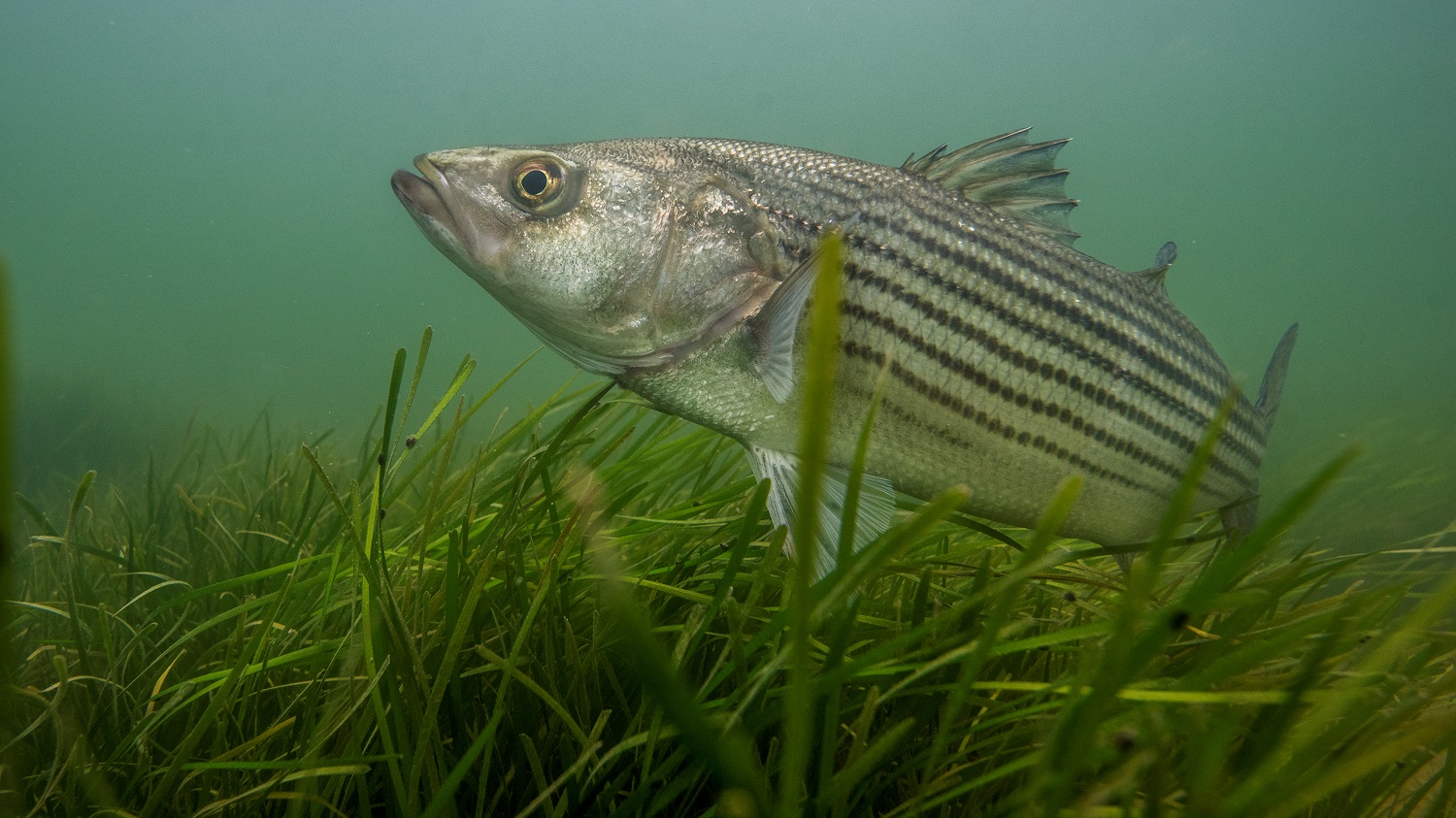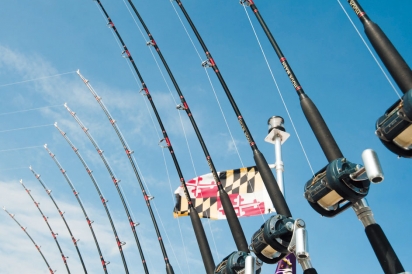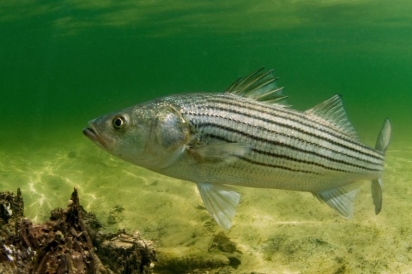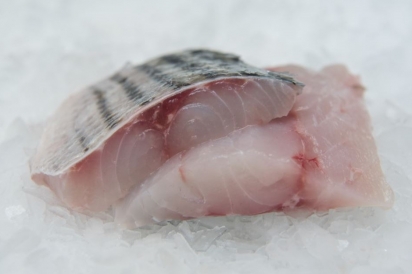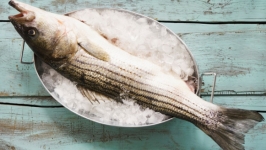Rock of Ages: Rockfish Season on the Eastern Shore
There are not a lot of meals that begin with a wrestling match. The line, taut to the point of breaking, the rod tip bowing like a sapling in a hurricane. Below the dark water, a silver flash and a stubborn, fighting spirit. It would seem a shame to vanquish it, if you even had time to think. The fishing rod wants to jump from your hands into the waves, following your fish to freedom. Shouts of “keep reeling!” don’t stop the rubber soles of your size-four sneakers from squeaking on the deck as a fish seemingly your size or bigger has its way with you.
This is how you rockfish. Or at least, this is how you rockfish when you’re ten, joining your father on the golden opening day of the annual rockfish season. Along with crabs and oysters, rockfish make up the trifecta of quintessential Chesapeake seafood. Unlike their sedate companions, lying motionless on the Bay’s bottom or dipped up while senselessly gnawing on an old chicken neck, rockfish are a hell of an experience to catch. That unforgettable struggle—the skill, the fight, the challenge of hooking a big-enough keeper, cresting the waves in big water—is what lured my Dad out of bed and onto the water at an ungodly hour, fueled by adrenaline and bad Folgers coffee.
Rockfish are a commercial fish, highly valued for their size and their flavor. They’re also a sportfish, prized just as highly for their thrashing, life-affirming zest and zeppelin bulk. Native to the East Coast of North America, these apex predators of the aquatic food chain are known elsewhere as striped bass. We Chesapeake people, contrary as usual, call them “rockfish.” It’s a name that speaks to their favorite haunts—what old-timers referred to as oyster rock—the architectural remains of old oyster beds where the big rockfish preyed on schooling menhaden.
Stakes were high that cool October morning in 1990, higher than I really understood. It wasn’t just opening day of rockfish season, it was the very first opening day after the state of Maryland had imposed a five-year moratorium on the fishery. A protective measure, the moratorium sought to preserve stocks of the fish after their numbers crashed in the late 70’s due to a combination of degraded environmental conditions and overfishing. By 1983, Maryland’s reported commercial catch of rockfish had declined from a high of 5 million pounds in 1973 to 445,000 pounds—a drop of more than 90%. Virginia followed suit with a one-year moratorium in 1989.
The rockfish moratorium worked, although it meant commercial fishermen and recreational anglers alike had remained at the dock for five long years. In the meantime, the rockfish numbers had rebounded. The Federal government instituted its own Striped Bass Conservation Act in 1984 to manage the fishery, and along the East Coast, scientists tagged, tracked, and studied the migration patterns of rockfish in the Chesapeake and other Atlantic tributaries.
That morning of October 5, 1990, the season reopened. Each angler had a strict limit of 2 rockfish per person per day, and each fish had to be at least 18 inches or more. What that meant for me, wrestling with my own personal version of Moby Dick under the shadow of the Bay Bridge, was that there was no way on God’s green earth I was going to let this rockfish escape.
Fortunately, there were cooler heads and stronger reeling arms onboard. After letting the striper drag me around for a while, my dad took the rod from my hands and helped me reel it in. Once it had been brought to the Whaler’s gunwales, I held the rod steady as he brought the net underneath and landed the rockfish on deck. The huge body surged from the water and thrashed mightily, flashing white belly to striped silver sides. Wetly slapping against my sneakers, we lifted its bulk to check the length—18 inches exactly, a keeper—and tossed it into the cooler for later cleaning. I was electrified. Sweater spangled with fish scales and feet completely soaked, I crested a wave of adrenaline and power. Such was the magic and the lure of rockfishing.
At home, dad would clean and filet the fish for dinner. Separated from their host and with all muscle cleanly stripped away, the rockfish filets were a delicate pink. One filet alone could feed several people, so when rockfish was on the menu, we always invited a crowd. These evenings always felt jubilant. After a cold day on the water, your hunger and thirst were magnified and so, too, were any details of your fishing prowess. Your rockfish might add a couple of inches, and your stamina and heroic efforts with rod and reel became positively Olympian.
For the first time, I had my own fishing story, too. I was ten years old, I had caught my first rockfish, and my dad was going to feed our friends and family with my catch. Sitting next to the woodstove while dinner was cooking, I was still dazzled by the sun on the water and the powerful fish on my line. One part of me was smelling the butter browning while the other part was still out there in the wind and current, watching for the sparkling lure, a tug on the line from deep below. Even in bed that night, full of rockfish and tired to my bones, I still felt the echo, the great and final battle from the first rockfish of a new age.


